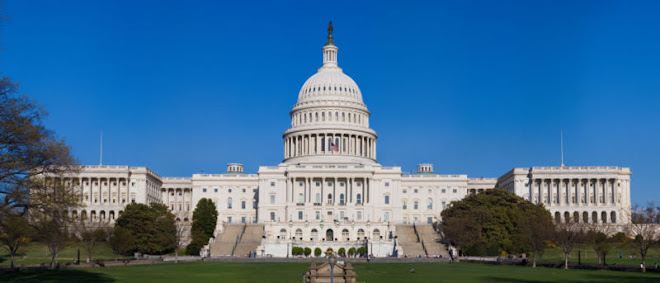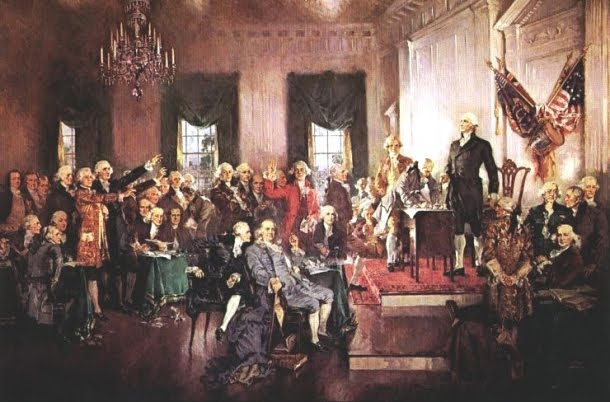From The Heritage Foundation:
Education Notebook
A Weekly Digest of the Latest Developments in Education Policy Across America
What to Watch
Exclusive Interview with Governor Rick Perry
Texas Governor Rick Perry discusses why state and local control of education is vital to student achievement and to the strength of the nation, stating that national standards and testing “would be devastating” for students.
Number of the Week
7
Million
Man-hours of paperwork necessary for states to comply with No Child Left Behind, costing states a total of $141 million
Click here to read more
Quote of the Week
“This is the U.S. Department of Education, putting [out its] view of what needs to be done. ... It's not the states deciding. It's not local control.”
-Rep. John Kline (R-MN), speaking about Race to the Top in an interview with Education Week
Don't Miss
“Greater and greater control of our educational system is being wrested from our local school boards and placed into the hands of faceless bureaucrats in Washington, D.C.,” says Congressman Scott Garrett (R-NJ).
In his op-ed, Garrett discusses how federal programs like Race to the Top and No Child Left Behind fail to promote education reform and why greater local control is the way forward.
Upcoming Events
Excellence in Action National Summit on Education Reform 2010
Presented by the Foundation for Excellence in Education
November 30-December 1, 2010
Washington, D.C.
Your Education Dollars at Work
Last week, President Obama traveled to New Mexico to deliver remarks on education at the home of a local Albuquerque family. According to the Associated Press, “Obama argued that Republicans would cut education spending to pay for tax cuts for the rich.”
While the politics of Obama’s assertion can be left to debate by members of Congress, it is clear that over the years, conservatives have pushed for policies that better target education dollars. Instead of just throwing more money into the monolithic public education system, which in many instances ends up lining the pockets of education unions, conservative solutions include giving state leaders the freedom to opt out of federal education programs and consolidate federal funding, empowering them to better target education resources.
Conservative solutions also include enabling state policymakers to permit parents to take their share of federal education funds to a school of their choice.
Conservative solutions do not, however, include throwing more money at the failed status quo. Over the decades, education spending has increased rapidly, despite the fact that spending has no correlation with academic achievement. In fact, since the 1960s, real per-pupil federal education expenditures have more than tripled (after adjusting for inflation). Yet reading achievement has remained flat since that time, math achievement has improved only modestly, and graduation rates are the same today that they were in 1970.
But over the past several decades, the left has been creating a crisis in education in four significant ways:
1. Increasing spending to fund the bloated education bureaucracy. In 2010, the average salary at the Department of Education reached $103,000. By comparison, in 2009, the average public school teacher salary was $53,000.
2. Empowering education unions that stifle education reform. With a budget of more than $355 million, the National Education Association spends more on campaign contributions than do ExxonMobil, Microsoft, Wal-Mart, and the AFL-CIO combined.
3. Increasing non-teaching staff positions. Since 1970, student enrollment in public elementary and secondary schools has increased just 7 percent, while public elementary and secondary non-teaching staff hires have increased 83 percent.
4. Squandering $100 billion in “stimulus” money. States are using portions of this stimulus money to fill or create these non-teaching positions, such as IT support, office staff, central administration staff, curriculum coordinators, district coordinators, recess aides, consultants, and federal program directors. The creation of such non-teaching positions has been a major factor in straining state budgets for years.
Children certainly deserve better than policies that continue to throw more money at a broken system. Instead, Congress should work to free states from much of the bureaucratic red-tape handed down from Washington. In so doing, state leaders would be empowered with increased control over education funding, which would advance excellence and innovation.
A READER ON THE STATE OF THE POLITICAL DECAY AND IDEOLOGICAL GRIDLOCK BETWEEN ONE GROUP WHO SEEK TO DESTROY THE COUNTRY, AND THOSE WHO WANT TO RESTORE IT.
The Rise and Fall of Hope and Change




Alexis de Toqueville
The American Republic will endure until the day Congress discovers that it can bribe the public with the public's money.
Alexis de Tocqueville
Alexis de Tocqueville
The United States Capitol Building

The Constitutional Convention

The Continental Congress

George Washington at Valley Forge



No comments:
Post a Comment